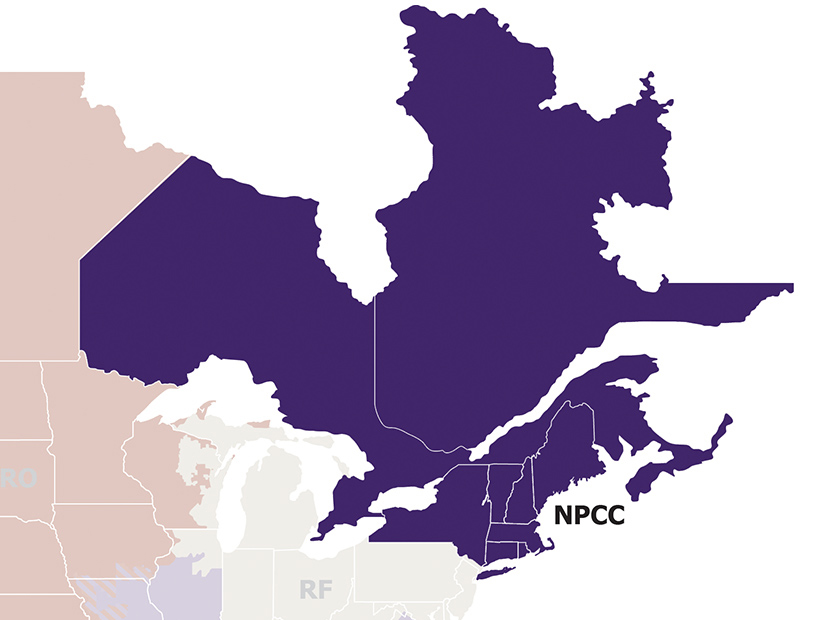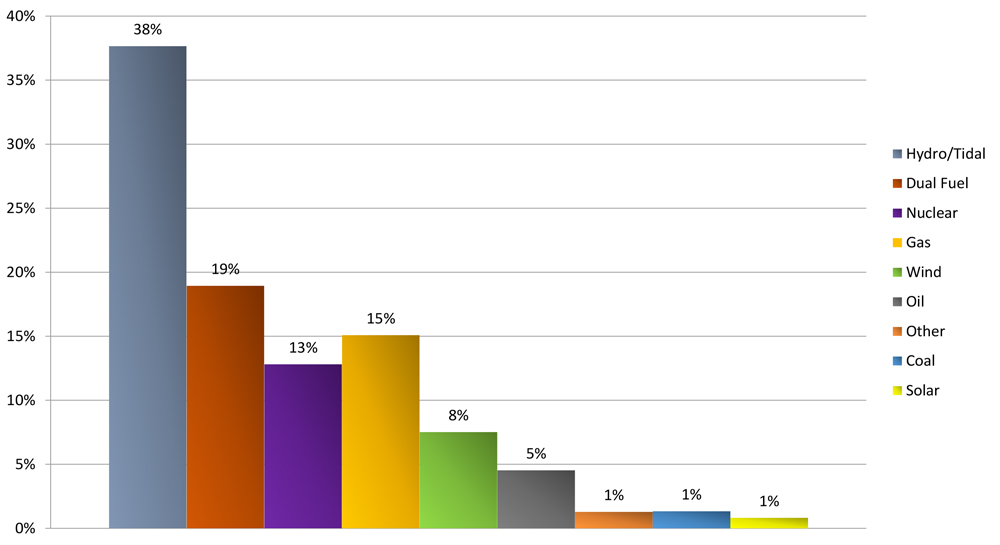
The Northeast Power Coordinating Council (NPCC) expects to have adequate supplies to meet an anticipated 104,601 MW of demand for this summer’s peak week of July 24, according to its summer Reliability Assessment released Thursday. Generation and transmission facilities are also believed to be sufficient.
NPCC’s demand prediction is up slightly from last year’s projection of 104,075 MW for the peak week of Aug. 8. (See NPCC Predicts Lower Peak in Summer 2021.) Ambient weather conditions including heat and humidity are once again “the single most important variable impacting the demand forecasts,” though the ongoing return of currently remote workers to their offices, coupled with continuing remote status for other employees, is expected to “translate to a small increase” in peak demands for the summer.
Total capacity for the region — which includes the six New England states, New York, Ontario, Québec, New Brunswick and Nova Scotia — is slated at 163,668 MW. The total includes 159,401 MW of installed capacity, down about 1,530 MW from last summer; 1,954 MW in net interchange, representing purchases and sales with areas outside NPCC; and 2,313 MW in dispatchable demand-side management assets, which help meet electricity needs by reducing consumption.
 Resource fuel type for NPCC during the week beginning July 24
Resource fuel type for NPCC during the week beginning July 24
The overall peak demand is based on a 50/50 system load forecast for peak week, representing a prediction with a 50% chance of being exceeded. NPCC’s assessment also includes a 90/10 forecast — with a 10% chance of being exceeded — and a “low probability, high impact composite scenario [based] heavily on individual area risk assumptions,” which the report refers to as “above 90/10.”
In the 90/10 forecast, total demand rises to 111,643 MW, while the above 90/10 scenario projects demand of 117,653, resulting in net margin of 3,753 MW for the former scenario. For the latter, a rise in maintenance and derates results in a net margin of -5,478 MW.
Also included in the assessment is a snapshot of regional forecasts with their own 50/50, 90/10 and above 90/10 scenarios:
- NYISO: peak demand of 31,764 MW (50/50) and 33,747 MW (90/10), down from 32,327 MW and 34,321 MW last year. Total installed capacity for peak week is planned at 37,431, down from last year’s peak of 37,785 MW. NPCC said no transmission-related reliability issues are expected this summer, though multiple outages will likely result from “New York public policy projects.”
- ISO-NE: peak demand of 24,817 MW (50/50) and 26,624 MW (90/10), a decrease from 24,810 MW and 26,711 MW last year. Installed capacity for peak week comes to 28,626 MW, with the decrease from last year’s 30,133 MW attributed to retirements of multiple natural gas facilities.
- Ontario: peak demand of 22,546 MW (50/50) and 24,675 MW (90/10), up from 22,500 MW and 24,228 MW in 2021. The installed capacity of 38,239 MW is 865 MW lower than last year because of retirements and delays in commissioning new resources.
- Québec: peak demand of 22,271 MW (50/50) and 23,122 MW (90/10), up from 21,436 MW and 21,886 MW. In part from reductions in wind and biomass capacity, total installed generation for the province is down from 46,529 MW last year to 46,512 MW this summer.
- New Brunswick and Nova Scotia: peak demand of 3,475 MW (50/50) and 3,702 (90/10), down slightly from 3,479 MW and 3,726 MW. Installed capacity for peak week is projected at 7,686 MW, a net decrease of 23 MW from last year because of the retirement of two generating stations.
“Our assessment estimates that the … region’s spare operable capacity … will be quite sizable. Simply put, that means that the region has extra insurance against unforeseen events and demands on the grid,” NPCC CEO Charles Dickerson said in a press release accompanying the report. “Against the stress tests of our assessment, the region has a reliable bulk supply and transmission capability of electricity throughout the summer months.”

